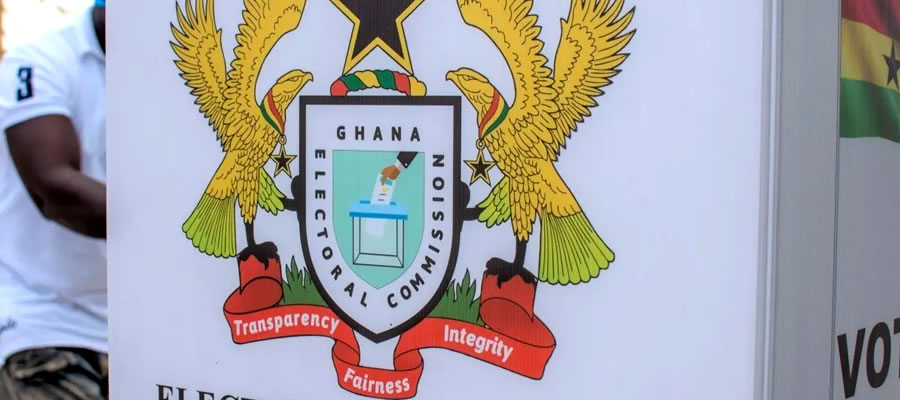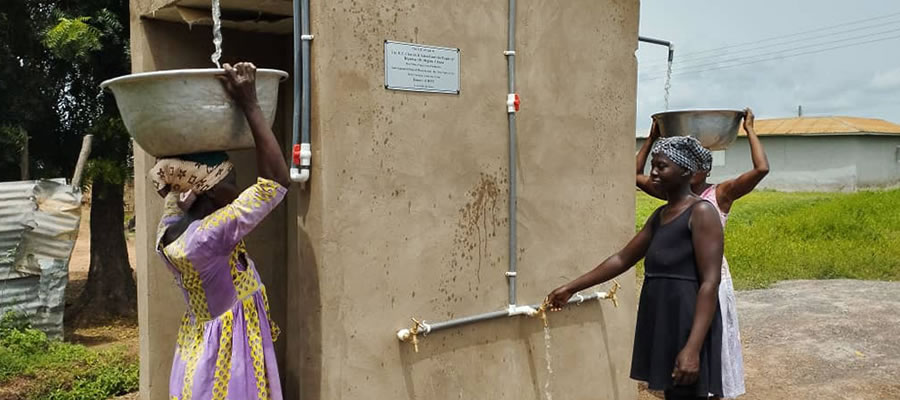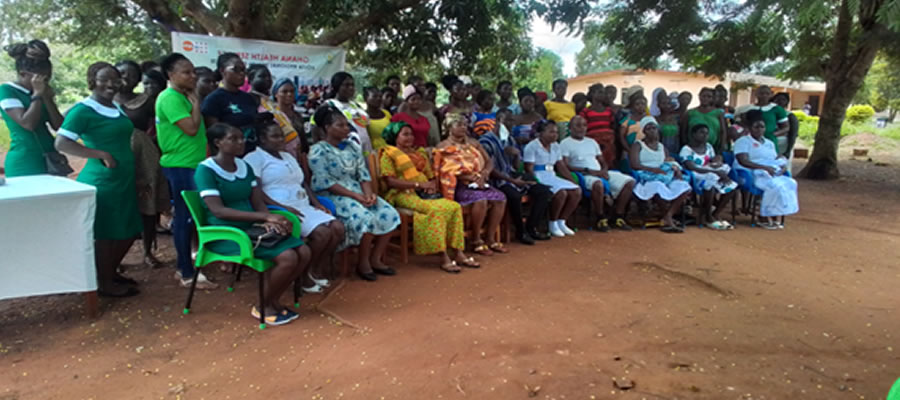

Rigging Elections In Ghana Impossible! – Part Two
In Part One of this two-part series, we discussed the process of voter registration, the exhibition of the provisional voters register, balloting for positions on the ballot paper, and the printing and distribution of ballot papers. Transparency is a key feature in Ghana’s electoral processes, allowing all stakeholders, especially political parties, to actively participate in and observe every step.

Date Created : 7/29/2024 7:51:50 AM : Story Author : EC Communications Team
Moreover, at any point in each electoral process, stakeholders can seek redress for any issues they are dissatisfied with. Political party representatives take part in the adjudication process, such as the District Registration Review Committee (DRRC) that examines and decides on registration challenge cases and the Adjudication Review Committee (ARC) that examines and decides on cases of multiple registration.
In this concluding part, we will discuss what happens on Election Day. So, what makes Ghana’s electoral process so incontrovertible that even on Election Day, it is impossible to rig elections in Ghana?
On Election Day
On Election Day, political parties have their agents at all polling stations. There are also independent observers (both local and international) and the media present. At the beginning of voting, an empty transparent ballot box is shown to all stakeholders and voters present. The ballot box is then sealed with the seals of the Commission and political parties who choose to place their seals on it. At the close of voting, all parties ensure that the seals remain intact, confirming that no one has been able to open the ballot box in order to illegally stuff ballots into it.
The ballot box is placed in full view of the public for the receipt of ballot papers. Pre-voting ballot accounting is done by election officials in the presence of party agents and observers. The total number of ballot papers is counted, and their serial numbers checked and recorded. Party agents, observer groups, and the media monitor the process of verifying voters, issuing of ballots to voters, and the voting process itself.
At the close of voting, post-voting ballot accounting is done by election officials in the presence of party agents and observers. The Presiding Officer, who conducts the counting of votes, is required to wear white gloves and raise both hands to show that he or she is wearing those gloves. This measure prevents any situation where counting officers could use ink to spoil ballots cast at certain polling stations. With white gloves, stakeholders can easily notice any such nefarious actions.
The seals are then broken off the ballot box, and the ballot papers are removed and placed on a clean table. The counting process, which is audible, is conducted in full view of all political party agents, observer groups, the media, and the general public. When the counting is completed, the results are entered on a carbonized Statement of Poll and Declaration of Results Form (a.k.a. Pink Sheet, a nickname given to the carbonised form because of its colour; the colour used to be blue, by the way, but was changed on the advice of the printers that you get better carbon copies with pink). The carbonized Pink Sheets are designed to ensure that there is a copy for every candidate in the election. Using carbonized Pink Sheets ensures that what is written on the first page appears on all other pages. For instance, if there are ten candidates in the presidential election, the Pink Sheet will have more than ten carbon copies to ensure that each candidate or their agent present at each polling station can have a copy.
The Pink Sheet is signed by all agents, and the results are announced by the Presiding Officer. The law requires that a copy of the Pink Sheet is posted on the wall of the polling station. Copies are also given to all party agents, as mentioned earlier. Every member of the public can take a photo of the results. The media and some observers collate their results from these Pink Sheets, helping them to use parallel tabulation to be able to often project the results of the elections before the Electoral Commission officially declares the final results.
If a party is not satisfied with the counting at a polling station, they can request a recount at the polling station. If they are still not satisfied, a second recount can be requested. The Presiding Officer may refuse to comply with the request for a second recount if, in their opinion, the request is unreasonable. They shall report the matter to the Returning Officer, who shall recount the ballots for that polling station only at the constituency collation center.
So, from all polling stations, political parties or their stakeholders need only to collate the results from the Pink Sheets—whether for the presidential or parliamentary election—just as the media and observer groups do. Whoever gets more votes from the polling station Pink Sheets across the country in the presidential election is the winner. Whoever gets more votes from the polling station Pink Sheets across any constituency in the parliamentary election is the winner of the parliamentary election in that constituency. It is the results from the Pink Sheets that determine the winner of the election, be they parliamentary or presidential.
Collation and Declaration of Results
For the presidential election, the whole country is one constituency. Therefore, all results from all polling stations must be added up so that the Chairperson of the Electoral Commission, who is the Returning Officer of the Presidential Election, can declare the winner.
To sum up the results of the Presidential Election:
? The polling station Pink Sheets for each constituency are all sent to the Constituency Collation Centre. All the results from all polling stations in that constituency are added up, in the presence of political party agents. The winner for that constituency is announced, and a copy of the results is posted at the Constituency Collation Centre. The results, set out on the Presidential Election Results Collation Form (Form 9) and the Presidential Election Results Summary Sheet (Form 10), are then forwarded to the District Electoral Officer.
? The District Electoral Officer, upon receipt of the Presidential Election Results Collation Form (Form 9) and the Presidential Election Results Summary Sheet (Form 10), forwards same to the Regional Collation Officer.
? The Regional Collation Officer adds up the constituency results from all the districts within that region and fills in the Presidential Regional Results Collation Form (Form 11) and the Presidential Regional Results Summary Sheet (Form 12).
? The Regional Collation Officer then announces the winner for that region, and a copy of the results as set out in Form 12 is posted at the Regional Office of the Commission, which acts as the Regional Collation Centre.
? The results from each region as set out in Form 12 are then forwarded to the Head Office of the Electoral Commission via fax or email.
? At the Head Office, just like at all the collation centres mentioned earlier, agents of political parties, observer groups, and the media are present. Officials of the Electoral Commission, in the presence of accredited agents, observers, and other stakeholders, simply add up the results from all 16 regions to determine the winner of the Presidential Election, who is then declared as such by the Chairperson of the Electoral Commission, the Returning Officer of the Presidential Election.
In all the processes outlined above and backed by law, there is absolutely no way the Chairperson of the Electoral Commission can declare a winner of the Presidential Election for any candidate other than the one duly elected from all the polling stations.
For the Parliamentary Election, the results for each constituency are declared by the Returning Officer for the constituency after collating results from Pink Sheets from all the polling stations within that constituency.
Every political actor in Ghana knows these processes and understands that elections are won or lost at the polling station. Results are collated from Pink Sheets from all the polling stations. All political parties receive copies of the Pink Sheets. It is expected that all political parties will by now have a system to collate results. This gives them a sound knowledge of who wins the election.
The Electoral Commission is not the only stakeholder that collates results. Today, with the use of technology, some media groups and political parties can put systems in place to collate results. Political parties must set up a system to collate results from Pink Sheets. This is possible using simple information technology tools.
From the detailed electoral process discussed in this two-part series, beginning with voter registration and ending with results collation and declaration, rigging elections in Ghana is impossible.










 facebook
facebook
 twitter
twitter
 Youtube
Youtube
 +233 593 831 280
+233 593 831 280 0800 430 430
0800 430 430 GPS: GE-231-4383
GPS: GE-231-4383 info@ghanadistricts.com
info@ghanadistricts.com Box GP1044, Accra, Ghana
Box GP1044, Accra, Ghana